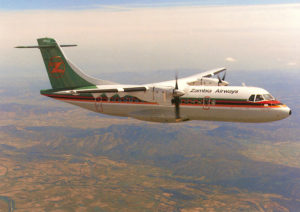by
Mwizenge S. Tembo, Ph. D.
Professor of Sociology
When I was ready for breakfast Aunt a NyaZghambo had tea and a sandwich of fried eggs scrambled with fresh tomatoes at the table. Eggs were a constant as Aunt NyaZghambo had a vegetable garden and raised a few chickens in the backyard. Before I went out of the door to walk to my work at NAMBOARD on Cairo Road, she reminded me to pick up my back door key to my bedroom in case I returned late that night after the family had locked the front door and had gone to bed.
After I got out of the short house gate, I turned right into Buchi Road. After about a hundred meters of the paved or tarred road, I turned left into a bush path that was a short cut to the Great East Road. I immediately saw the tall chitongororo tree with its distinctive white long thorns. I remembered that when I was growing up in the village, my grandfather had said the roots of the chitongororo tree were one of roots from four trees that that are used for treating childhood seizures or what the Tumbuka call chinthu cawa; something that suddenly attacks from without. What I didn’t know at the time I was walking on the bush path is that twelve years later, a very close Chizongwe Secondary School friend would knock at my house in Lusaka. He would tell me that he and his wife had taken their 6 year old son to the clinic of a very prominent Pediatrician

clinic in Lusaka. The son was having many terrible seizures every day. The serious side effects of the anti-seizure drugs the doctor had prescribed that they had bought from the Chemist their son was taking were turning him into a drooling inactive child with droopy eyes. I immediately went to the farm to which Aunt NyaZghambo had retired and explained the problem to her.
I would go to the bush with her with a hoe. We would walk around searching. She would instruct me to dig the roots of the chitongororo tree, matongo gha kalulu (the testicles of a hair), kabingamizimu (the spirit chaser), futu, and mkorankhanga (the guinea fowl catcher). I would take the roots to my friend’s house and give him and his wife the complex instructions about how to administer the roots. Their son was would be cured in two months.
As I walked along the path, I wondered whether there were any roots that anyone or any ng’anga or healer who could help getting my love Linda Jitanda to me. May be I could try anything when I got desperate enough. It was too early. I could hear the loud buzz of cars of heavy traffic. The path opened into the Great East Road and I took a right. The cars were jammed moving slowly. There were so many cars with AAA and AAB number plates. The newest cars had the AAC number plates. These were imported Toyota Corona Sedans, Dutsuns, Pugeots, and there were numerous Fiats from the Livingstone Car Assembly. There were AAC cars that were Fiats 124, 125, 127, 131, and most luxurious top of the line Fiat 132. As I walked I thought I could soon get a loan to buy a Fiat 127; they were only three thousand kwacha brand new from Livingstone Motor Assembly. May be NAMBOARD could also give me a flat or apartment and I would buy a big record player one with big speakers. I could host great parties. May be I could also travel abroad and fly on a bigger Zambia Airways plane. A lovely woman might just be around the corner. I felt good and excited about the possibilities for the future. It is amazing what walking can do.
The railway trucks on Independence Avenue before the South-End of Cairo Road round-about had a flyover bridge. So did the rail trucks have a flyover bridge on Church Hill Road. The Great East Road rail trucks before the North-End of Cairo Road did not have any rail truck at all. I had walked passed the Makishi Road and Wamulwanda Road to Thorn Park just before the rail crossing when it happened when I was just fifty meters from the railway crossing. Everything happened at the same time. A car screeched!! and thud! thud! I saw a man bounce from a car bonnet or hood and fly in the air and landed flat on his bottom. His bicycle wheeled a little further and fell on its side. The big rail crossing red lights flashed on and off, bells clanked, and the long red and white gate bars lowered to block traffic. I hustled quickly to see what had happened as the approaching train bellowed very loudly.
The driver who had hit the man stopped and came out to inspect his bonnet. There was no dent on his car. The train was so loud I could not hear what the driver was saying furiously pointing at the man who was still seated on the ground with a tiny cut on his forehead. Otherwise he looked unharmed. The loud train passed and the gates lifted. By this time a small crowd of pedestrians had gathered.
“He was trying to cross the busy road hurrying blindly pushing his bicycle!” The driver pointed at the man. “If it was not for the train slowing cars down at this crossing, I would have severely injured or even killed him! He is lucky! Stupid pedestrians!!”
The driver got back into his car and angrily slammed his car door. So many cars behind him were honking or hooting. Because the rail crossing bars had lifted, the flashing lights were off, the train had passed, impatient drivers were wondering what was holding traffic. There was no police in sight.
“Bamdala, muli bwino?” someone in the small crowed asked the man as he finally stood up. He brushed the grass from the seat of his trousers. He had been dazed. He said he was alright.
“Next time bamdala,” someone said. “Be careful ni mu Lusaka muno ka!!”
The man picked up his bike and rode it toward Matero in the Industrial area. He must have been hurrying to work.
I crossed the street and walked along another bush path along the train trucks behind the Northend of Cairo Road toward Kwacha House. I walked into the building into the elevator. What would happen in the elevator would stun me.
